No really, like, how?
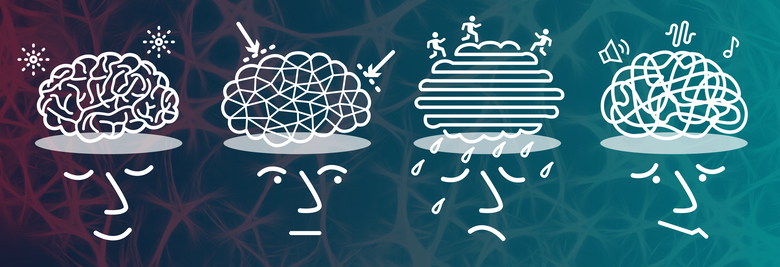
How do you feel?
The human sensory system is an anatomical marvel—a symphony of neurons and chemical reactions giving the brain a window to the world. Just like any other system of the human body, these sensors come in infinite variations, ensuring that no two people experience an environment in exactly the same way. In this month’s "On Our Minds…" we ponder: is your workplace taking that into account?
On our minds
You’ve no-doubt heard the line that perception is reality. When it comes to the way someone experiences a space, it’s particularly true. Each human being has been bestowed with a bespoke sensory system; no two are the same. We have unique preferences and thresholds for comfort, delight, and pain. Some theorists believe that the way we each perceive the world shapes the very nature of conscious thought itself—consider that until fairly recent human history, the color "blue" wasn’t even a thing.
The subjective nature of experience is central to the interplay between place, people, and performance. An individual’s sensory preferences can change throughout the day, depending on the task at hand, stress, hunger, fatigue, recent interactions with colleagues, or circadian rhythms. We also self-reflect and adjust our expectations in response to social cues.
There is no ‘right’ or ‘wrong’ experience. Who is one person to tell another that a room is not actually too cold, for example, or that the sound of a colleague talking at a neighboring desk is not actually distracting? Through this lens, it’s easier to see how an open office layout can hamper the concentration of some people while others are unaffected, or even positively energized. Sensory preferences and needs can have an impact on individual and team performance.
In corporate organizations, people don’t always speak up about their comfort or sensory preferences. They have often been expected to "make do" in the work environments allocated to them, even if those make them less effective. They may think that they lack the influence or means to advocate for their comfort or, as often happens in matters of design, simply be unaware of how much better their workplace could be.
We are reminded (in part since April is Autism Awareness Month) of the work of one of our heroes, Temple Grandin. Her advocacy for more humane handling of cattle is rooted in an understanding of the distress that occurs when one is constantly uncomfortable in one’s surroundings. This chair, which Grandin co-designed to help people with sensory differences to concentrate, is an inspiring example of how this insight can be applied to design for humans. Did the designer of your workplace come from that place of empathy?
Standards are too... standard
The old prescription for the plethora of human preferences was to just make everything neutral—that’s why so many places are notably beige on beige. But beige does not inspire, and the ongoing consumerization of the workplace is leading occupants to expect positive sensory experiences, not just non-negative ones. Hospitality and retail have this at the center of their business—that’s one of the reasons we think more work environments should follow their lead.
Building standards rely on an abstract model of an average occupant—ignoring the actual occupant who would be happy to tell you what they want if given the means to do so. Many standards can’t help but be a compromise for most users most of the time, and in the case of temperature are based on outdated assumptions about who those users are. Standards also strip away context; for example, a room at a given temperature will feel warmer if the warmth is radiating from a surface than it does when it’s just in the air.
Connecting with how people actually experience a space through all of their senses—and how it makes them feel, is key. This is the only way to escape a world of beige without resorting to whim. Buildings can now offer multiple experiences in relative proximity, or even sensory changes programmed through building technology to change the same space over time. Designing with a better blend of building hardware and software offers a unique opportunity for sensory customization.
Customized is the New Standard
To paraphrase a panelist at our recent event "PROOF: The Power of Social Research in Design," does the responsibility for individual comfort lie with the person, or the building? The answer, in our opinion, is “both.” Provide the occupant as much control as possible. It’s true that sometimes the best design solution for an office that feels too cold, is a nice sweater, but we no longer have to settle for spaces that don’t work for their occupants.
We spoke about this on the CoreNet What’s Next podcast with Chris Hallas of Comfy following CoreNet APAC last spring. Of the many reasons that we are fans of mobile work styles like Activity-Based Working, chief among them is that it allows occupants to choose the space that best fits their activity—including the sensory experience they would like. When people can adjust their environment, that sense of control actually contributes to their sense of comfort.
As building technology is deployed, opportunities to create better experiences multiply. Apps that allow people to change their environment also leave behind a valuable trail of data about their preferences, which can then be used to improve services. Rather than wait for something like a "Hot" or “Cold” call, when the occupant is already uncomfortable, the building can accommodate them seamlessly. In addition to being more pleasant for the user, this saves energy.
If building modifications aren’t in the cards, there are still steps you can take to design for comfort and delight. Furniture choices can make a big difference. Choosing a resimercial aesthetic can be both more (emotionally) attractive and functional. We've highlighted products and services that can empower people to choose their own experience—from noise-cancelling speakers to desktop games—in our holiday newsletters 2017 and 2018.
Whatever the strategy, designers can and should do more to account for the wide range of sensory preferences and needs if they want to adapt spaces to the people who use them. The last few years, and an exciting range of digital and physical products, have provided many new tools to do exactly that, offering the possibility of a space that enables everyone to do their best work.
From the archives
To design for the full range of human sensory experiences, you have to start with empathy. Back in 2017, we wrote about Multisensory Design for WorkDesign Magazine.
Of course, the spaces we occupy are only part of the equation. Office culture is equally important to enabling a fuller range of people to work comfortably in a space. In 2016, our founder gave the keynote at an event hosted by LivePerson: Creating a Culture-Driven Workplace.
That’s all for this month. We’re always just a few clicks away! We’d love to hear your workplace sensory experience story—or (if your not suffering from alergies) tell us about the scent of your favorite spring flowers.
In Case You Missed It
We love traveling near and far to spread the word about high-performance workplace design.
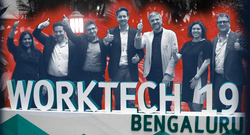
WorkTech Bengaluru
We spoke about using data to create the optimal workplace experience at the inaugural WorkTech event in India.
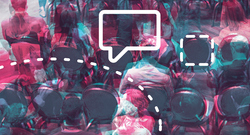
Wharton People Analytics Conference
After last year’s win in the Startup Competition, we were excited to return to this perennial favorite, which focuses on people, data, and performance.
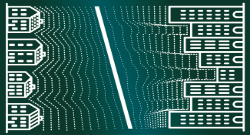
Coworking in the Suburbs
We love coworking, so it’s exciting to see these spaces opening outside of urban cores.
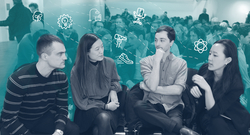
PROOF: The Power of Social Research in Design
We organized and moderated this AIANY panel on using data to create higher-performance workplaces.

Workplace Chuckles
We couldn’t help ourselves; we shared a few of our favorite workplace innovations earlier this month—on the 1st, that is ;)

Hande Joins the Team
We’re happy to be joined by Hande Oney, who is working with PLASTARC to expand the range of workplaces that we can serve. Welcome aboard!
Looking Ahead
April always puts a bit of spring in our step. Good thing, too, since we’ve got places to be!



